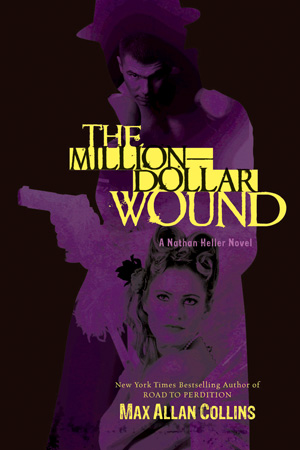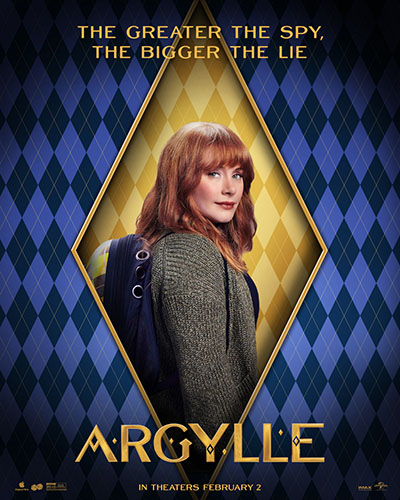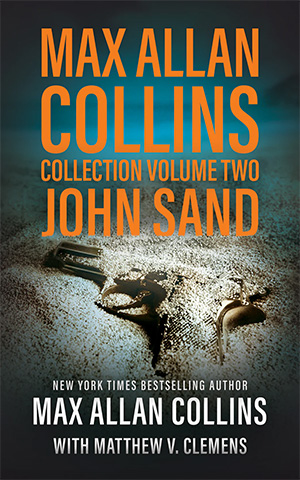Today I’m sharing a few photos from our Muscatine, Iowa, premiere screening of Blue Christmas and more than just a few pics from the last stop on our premiere tour, The Last Picture House.
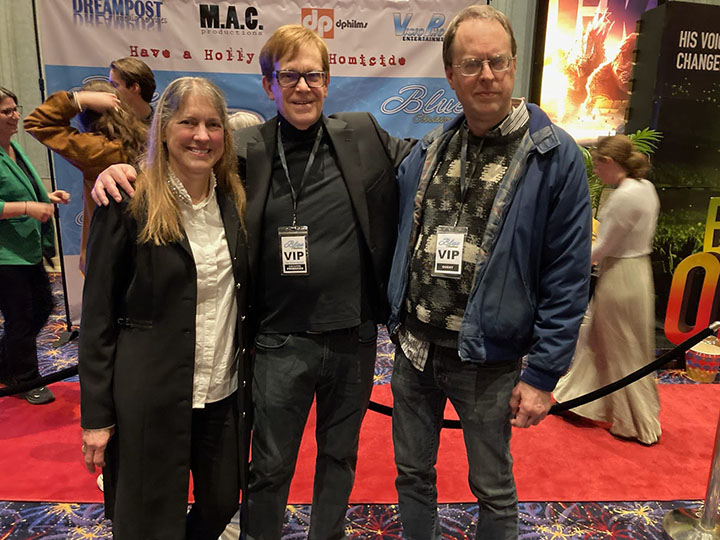
Karlyn Larson, MAC, and my old friend from band days, Charlie Koenigsaecker
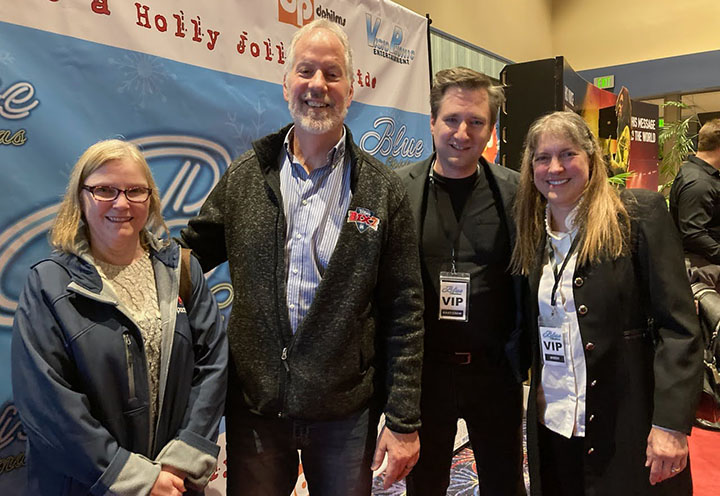
Sheila Miller, Dave Juering (who plays the “snake” Larry Turner in BLUE CHRISTMAS), Rob Merritt (Richard Stone) on the red carpet at the Muscatine Premiere showing of BLUE CHRISTMAS at the Palms 10.
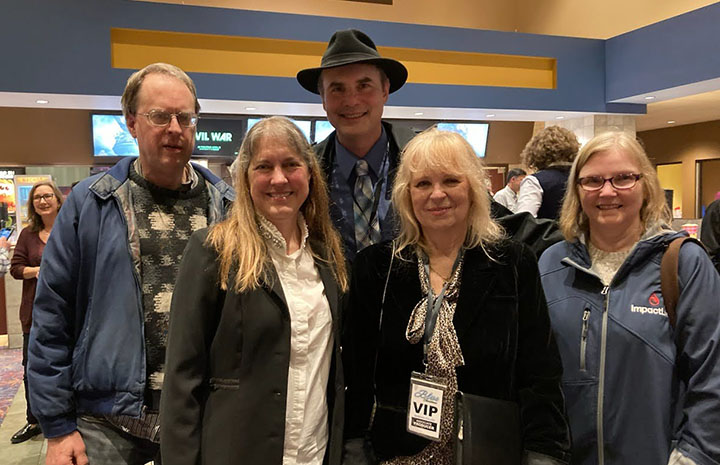
Charlie Koenigsaecker, Karlyn Larson, Christ Causey (Jake Marley in BLUE CHRISTMAS) Barbara Collins and Sheila Miller at the Muscatine, Iowa, Premiere of BLUE CHRISTMAS at the Palms 10.
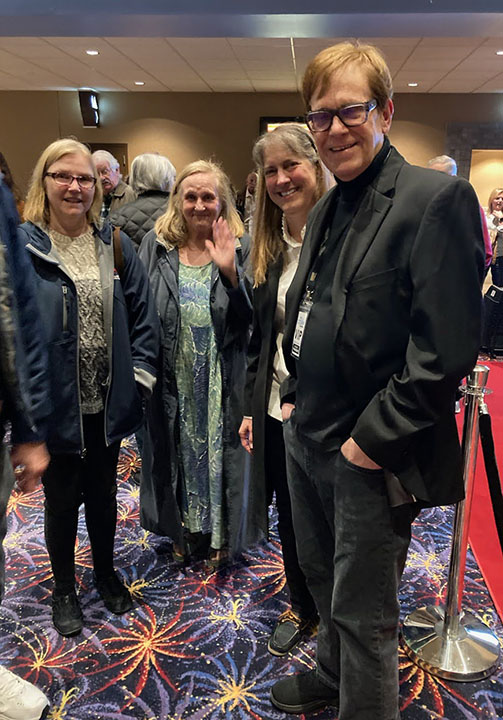
Sheila Miller, Linda Annis, Karlyn Larsen and MAC at the BLUE CHRISTMAS Premiere at Muscatine’s Palms 10.
All of these theaters – the Fleur in Des Moines and the Palms in Muscatine (both of which are Fridley Chain venues), as well Bruce Taylor’s Collins Road Theatre in Cedar Rapids and Davenport’s Last Picture House – have been incredibly supportive, and the turnouts have been stellar. Cedar Rapids, Muscatine and Davenport were all sold out, strictly capacity crowds with tickets at a premium.

First A.D. Jodi Hanson watches from the sidelines at the packed house for BLUE CHRISTMAS at the Last Picture House.

The capacity crowd at the Last Picture House in Davenport prior to the Premiere screening.
The response from the audiences has been great, but of course we are careful not to get too full of ourselves, as we are well aware we have a home court advantage. Still, it feels very good. As I’ve said here before, Blue Christmas was designed for streaming and home video, and seeing it up on these huge movie screens, with booming movie-theater sound, has been frankly thrilling to our little army of actors and crew who turned six days and $14,000 into a credible movie – in a world where Hollywood thinks $5 mil is low budget.
I was blessed with a terrific cast, all from here in Iowa, and a crew that included my producer (and editor and much else) Chad Bishop, longtime partner and D.P. Phil Dingeldein (aided by First Camera Assistant Liz Toal), and our lead actors Rob Merritt, Alisabeth Von Presley and Chris Causey. But really everyone in our cast of 24 (!) and tiny crew of half a dozen (!) hearty souls came through for me and for the production.
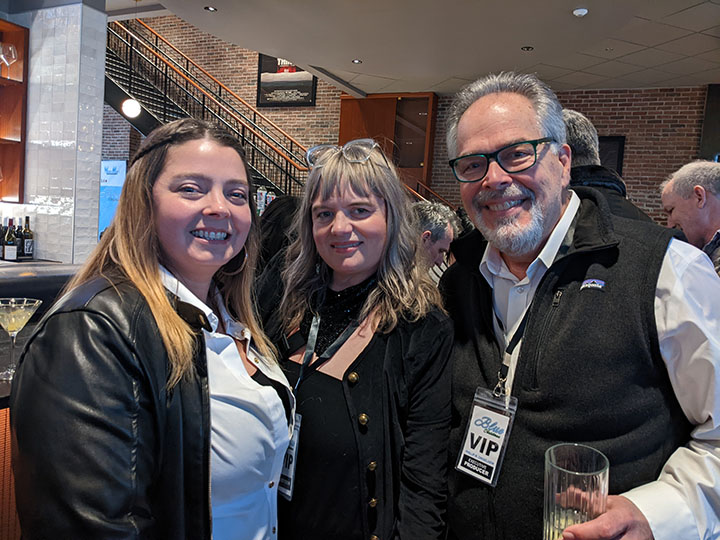
At the Last Picture House, Director of Photography Phil Dingeldein schmoozes with First Assistant Director Jodi Hanson and Set Design/Props Mistress Meg McCarthy.

Brian Linderman – Eddie Marley himself in BLUE CHRISTMAS – gears up for the Quad Cities Premiere at the Last Picture House.
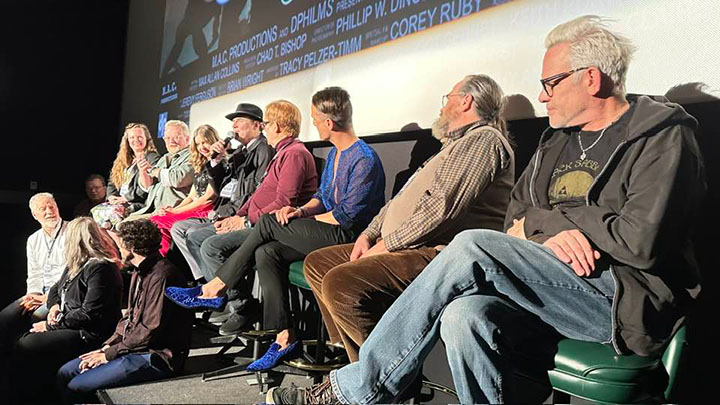
Chris Causey (Jake Marley in BLUE CHRISTMAS) answers a query at the post-screening Q and A at the Last Picture House in Davenport.

The beautiful Barb Collins with unknown attendee at the Last Picture House premiere.
We have one more stop on this mini-tour – Blue Christmas is an official selection of the Cedar Rapids Independent Film Festival and will be shown at 9 a.m. and at 1:05 p.m. on Saturday April 6, again at the Collins Road Theater (1462 Twixt Town Rd, Marion, IA 52302 – Marion runs side by side with Cedar Rapids). Tickets are $10 advance and $12 after April 4. I will be there for the 1 p.m. screening.
This will be the last opportunity to see the film before this year’s holiday season, when we’ll be in a number of Iowa theaters as well as available on Blu-ray from VCI Home Entertainment (MVD is handling streaming marketing, but it’s too early days to know what streamer or streamers will make it available).
The real final stop of our mini-tour will be for the Iowa Motion Picture Association Awards, an event held in Forest City, Iowa, on May 4. But this is a competition, not a festival.
My apologies to my readers and friends (not exclusive groups) who have been subjected here of late to pretty much nothing but news of this indie film production. We’ll be back to our regularly scheduled Heller, Quarry, Antiques news very soon.
And serious work on True Noir the Nate Heller podcast starting with a 10-episode adaptation of the first novel, True Detective, begins this week.
According to this excellent article on Road to Perdition (the movie), James Bond was not Daniel Craig’s best role!
Finally, here’s a video about the upcoming Nate Heller podcast series. Check it out!
M.A.C.






